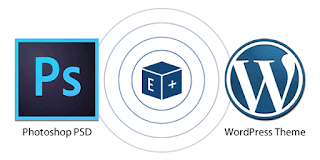When you are about to enter into the web development world to take your business on mobile you need to remember that crux of developing an incredible website , which is: Firstly, make the design interface attractive yet not a maze for the users. Secondly, make sure that the code for your website is quite functional and efficient.
Both these components work in together to render an incredible websites and one is incomplete without the other and you cannot cut slack in any of the two if you want to have a good website.
May people think that creating a good web design is a matter of sheer technical expert but it is quite an artistic job which requires great creative acumen which is quite a rare species;
However the other phase of web design which is converting it into intuitive web enabled components require you to have brilliant coding skills and a strong grasp on web languages such as HTML, PHP, CSS and JavaScript.
This brings to us the conclusion that creating a PSD image of your design is quite an easy but technically coding it into a workable and functional website is an arduous task.
Both these components work in together to render an incredible websites and one is incomplete without the other and you cannot cut slack in any of the two if you want to have a good website.
May people think that creating a good web design is a matter of sheer technical expert but it is quite an artistic job which requires great creative acumen which is quite a rare species;
However the other phase of web design which is converting it into intuitive web enabled components require you to have brilliant coding skills and a strong grasp on web languages such as HTML, PHP, CSS and JavaScript.
This brings to us the conclusion that creating a PSD image of your design is quite an easy but technically coding it into a workable and functional website is an arduous task.
WordPress is a blessing for those who do not have a good hand at programming, being an open source community has gifted or, an open source tool for developing websites quickly and is quite an effective content management system which is great user friendly quotient and can be used efficiently to create a quality website.
Though it is quite easy, but you need to focus on WordPress web development process as it is no cake walk to create a custom website. Those who are not sure about how to go about the process of PSD to WordPress Conversion can read along to get a lucid picture:
Step 1: Slice your PSD images
The process of PSD to WordPress conversion begins with slicing. Slicing implies cutting and dividing the design file of an image into several small files designs in which they will have different component of the holistic design. This process holds quite an important as no one can code the complete design in one single image. One single web design is a unit that comprises of multiple images interviewer seamlessly, and each and every component and design feature render a purpose and functionality of its own.
Step 2: Style.css and Index.html
Following that step is the coding process in which the sliced images are coded into HTML or XHTML web format and designers use CSS to style them. For this process the designers need to have strong hold on languages such as CSS and HTML.
To accomplish this purpose developers make softwares such as Fireworks and Dreamweaver, which are developed to create websites, however on top of it, it is totally dependent on the programmer what they prefer to use.
Step 3: Creating WordPress Theme
When it comes to the process of developing a WordPress website it is actually converting the WordPress theme which is then uploaded into a WordPress software.
Which means the prime focus of converting a PSD image to WordPress process implies to create a PSD image into a WordPress theme and then after making it functional using the tools and plugins to make it a fully functional website.
Thus in order to develop an extremely intelligent WordPress website, you need to design your basic HTML file as per the basic file structure of WordPress theme’s and then breaking down your HTML file into multiple HTML files that fits into the structure of the file.
WordPress comprises of several PHP files for instance Header.php,archive.php, Index.php, Footer.php, page.php, single.php, category.php,Sidebar.php, 404.php, search.php, comments-popup.php and comments.php.
Step 4: WordPress tags
WordPress offers numerous intrinsic functions that one can leverage to add basic functionalities onto your WordPress theme. This do not requires the developer to deal with complex HTML codes. All you need to do is to just incorporate inbuilt functions of WordPress into your theme files and incorporate the requisite functionality to get your job done.
Step 5: Make it functional
As we have now completed the task of creating and activating a theme, you can get to see the complete benefit of your WordPress CMS platform. For those who wish to get any other functionality in their website, or alter a functionality that already you need to just install a plugin or can use the WordPress dashboard to alter the existing structure.

Wow! Very useful article. Thanks for sharing this. It helped me.
ReplyDeleteNews Portal Website design Company Jaipur | News Agency Website Designing Services Jaipur
NGO website Design Company Jaipur | NGO website Designing Services Jaipur | Charity website Designing Jaipur | Trust website Designing Jaipur